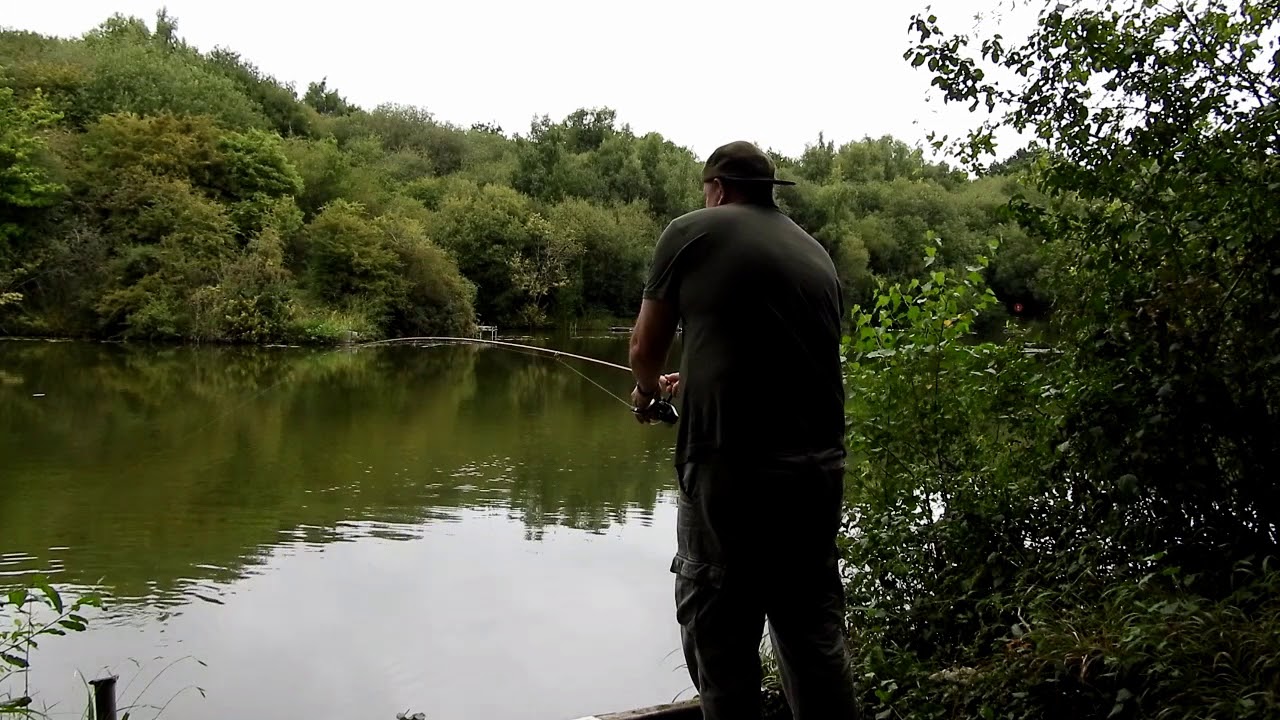The beauty of carp fishing lies in its simplicity. The bass fisherman can leave his fancy crankbaits, expensive rattle traps, and twitch worms at home. The catfish angler need not bring his stinky blood baits or squirming nightcrawlers. The bare minimum carp angler can succeed with a small hook, weight, and some pieces of sweet corn.
Of course, there are many other types of bait carp are likely to bite on including cubed potatoes, cheese, balls of bread, even hot dogs. The carp is a voracious bottom feeder, combing across the lakebed, sucking up, and tasting any possible food source. Similar to a catfish, another bottom feeder, the best presentation for bait is to plainly let it sit motionless on the flood. An easy rig is a sliding weight behind a single, small baited hook.
Freelining for carp is an exhilarating experience that relies heavily on stealth and guile. This is a guide on how to catch carp using the free line method.
Free line fishing really connects an angler to the fish he or she is trying to catch. It’s somehow more personal and it really gets the adrenaline racing. There are no boilies, no loud fish alarms, no floats and no weights. This is pure, stealthy fishing: man against carp.
Contents
Equipment for Free Line Fishing
The equipment an angler needs for this incredibly simple but rewarding free line technique is minimal and even the most novice of anglers will have everything that’s needed.
- A fishing rod.
- A reel.
- 6-8lb line.
- Size 6 hook.
- One small rod rest.
- Large landing net.
Best Bait for This Free Line Technique
The bait is absolutely minimal, too. And therefore cheap.
- Tin of luncheon meat.
- Bag of trout pellets.
Preparation for Freelining for Carp
Unlike traditional carp fishing methods, which involve much preparation and tonnes of kit, the preparation needed here is incredibly simple.
Prepare the rod and line as normal and tie the hook to the end, remembering to cut off any excess line to keep the knot clean.
The luncheon meat should be cut into cubes, approximately 2 cm by 2 cm. Using the hook, a knife, or even fingernails, roughen the edges of the meat. It’s a small detail, but it makes the meat look more natural.
Attach the luncheon meat to the hook by pushing the hook all the way through and then pulling it back down again by tugging gently on the line. A useful tip for free line fishing is to place a small piece of grass under the curve of the hook when pulling it back through so there is less chance of the hook slipping right through the bait.
Stalking the Carp
The best time for this kind of fishing is in the evening, particularly around dusk. Once the angler arrives at the lake, pond, or reservoir, the key is stealth. Freelining is all about fishing in the margins of a body of water and carp are easily spooked, so a careful approach is absolutely vital.
Anglers should get as close as possible to the edge of the water without casting a shadow or making any great noise or movement. Then, simply throw in a handful or two of trout pellets. With any luck carp, who love to feed in the margins, especially after a warm summer day in the evening, will soon begin to appear and mop up the offering.
This is already an exhilarating moment. The carp are right in front of the angler, feeding happily and oblivious to his or her presence. Once the carp are feeding without fear, which may take a few minutes, the freelining angler simply drops the bait gently in the vicinity of the pellets. The weight of the luncheon meat makes this easy, but the cast only needs to be a meter or two from the bank.
The Free Line Technique
Once the angler is happy with the position of the bait, the bail arm of the reel is flicked over so that if a fish does take the bait, then it will be able to run off with it without i8mmediate resistance.
Next, the rod is balanced on the rod rest at an angle of roughly 45 degrees. This should allow a nice ‘bend’ in the line, which will clearly tighten once a carp takes the bait.
Now comes the waiting, but in this case, especially if the water is clear, the tension can be thick because the angler can often see large fish happily hoovering the pellets all around the meat. At any moment, one might decide to gobble the luncheon meat too.
The angler must observe the bend in the line and learn through experience when to strike after it tightens due to a bite, remembering, of course, to flick the bail arm back over. The secret is not to strike too early, or the hook will simply be snatched from the mouth of the carp. Wait, if possible, for the head to turn.
Once hooked, the fight is on, and this is a tremendously exhilarating way to go fishing, to really connect with the fish, to outsmart the carp, and to use style and guile rather than a bombardment of boilies.

